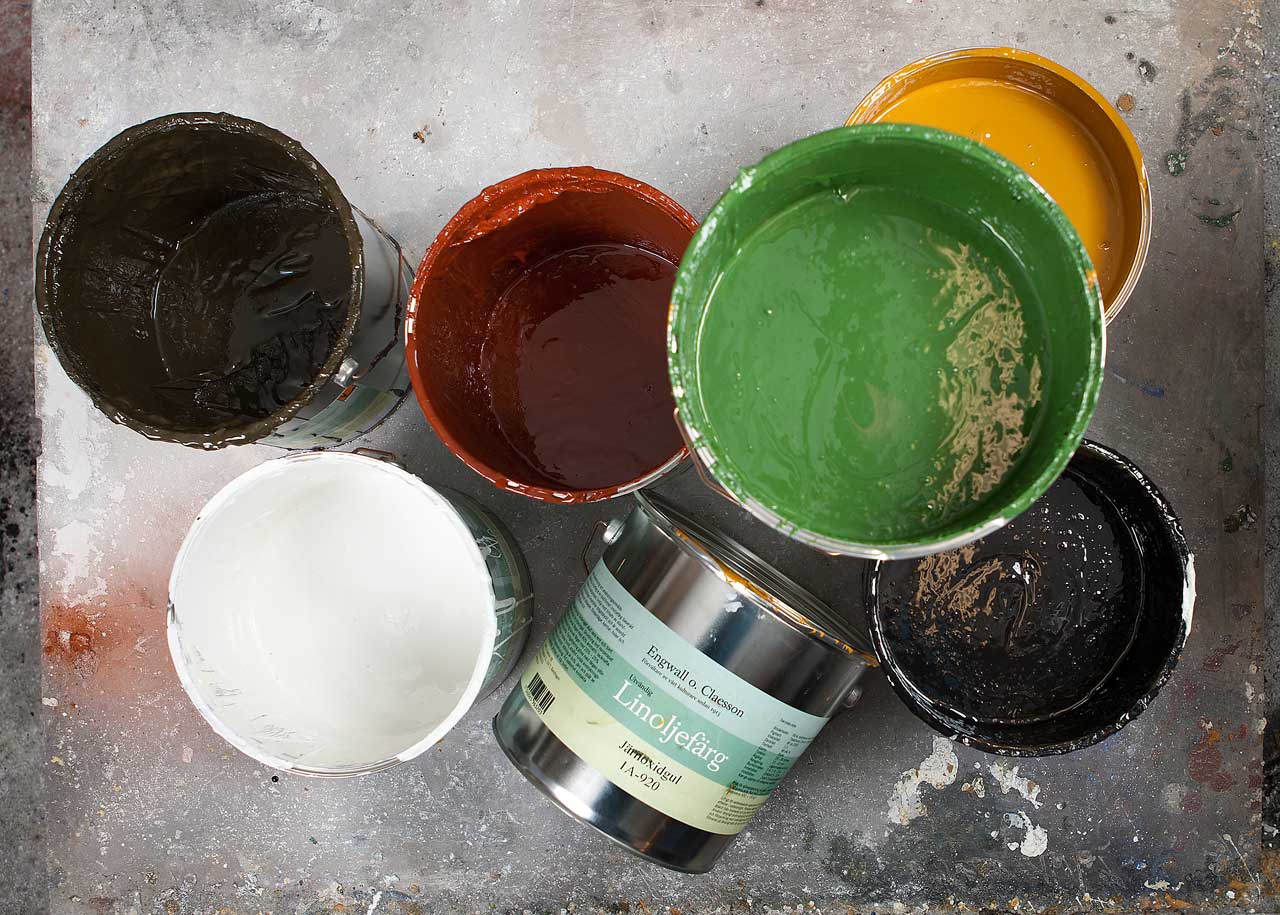
Paint with linseed oil paint
Linseed oil paint should be applied with a brush with stiff bristles in thin layers. Preferably with an oval or round brush made of real boar bristles. To obtain a really smooth surface, you can smooth after the color with a so-called modder.
Always stir the paint, but if a skin forms - DO NOT TOUCH, but remove the skin membrane first to avoid getting flakes in the paint.
Apply shellac before painting if you want to avoid twig penetration (applied indoors only)
* Don't be alarmed by the almost mirror-like surface when repainting! After about: 2-3 months, the color has stabilized and gone down to semi-gloss.
* If, on the other hand, you want a mirror-gloss surface permanently, it is possible to add linseed oil varnish to the color. You can also make the color duller directly by diluting it with solvent, white spirit or turpentine.
* It is easier to iron out the paint if you dilute it a little with solvent in the first application indoors, approx: 10-20%. If you want to avoid solvents completely, you have to make sure that you really struggle to spread the paint thinly, alternatively dilute with a little linseed oil if the paint is very sluggish.
* If you iron too thickly, the color will not dry! Otherwise, it should dry in 1-2 days.
But it's better to wait too long than too short between strokes.

* Indoors, iron 2-3 times on an untreated surface to get a beautiful finish
covering surface. If it becomes fiery, iron once more.
* Outdoors, you iron 3 times on one e.g. untreated panel.
1 the ironing - The paint is thinned approx. 40% with solvent
2 the ironing - The paint is thinned approx. 20% with solvent
3 the ironing - The color is ironed undiluted.
* The brushes are cleaned easily and in the most gentle way for both you and the environment
with linseed oil soap or crystal soap . 

